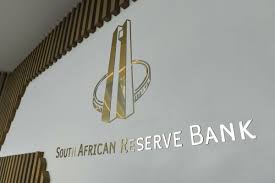SARB poised for interest rate cut: What it means for South African borrowers and consumers

SARB poised for interest rate cut: What it means for South African borrowers and consumers
South Africa is bracing for a pivotal moment in its monetary policy as the South African Reserve Bank (SARB) prepares to announce its final interest rate decision for 2025 on Thursday. The nation’s financial markets remain divided on whether the central bank will maintain its current rates or implement a modest cut.
At the previous Monetary Policy Committee (MPC) meeting on 18 September, SARB held the benchmark repo rate at 7%, keeping the prime lending rate for commercial banks steady at 10.5%. At the time, SARB Governor Lesetja Kganyago projected headline inflation to average 3.4% in 2025, rising slightly to 3.6% in 2026, before settling at around 3% in 2027. Recent data shows October inflation at 3.6%, up from 3.4% in September, further fueling speculation on the central bank’s next move.
The Case for a Rate Cut
Finance Minister Enoch Godongwana has indicated that a 25-basis-point reduction is possible this week, pointing to the formal adoption of a 3% inflation target as a key driver. A lower inflation target is expected to create room for “permanently lower interest rates,” stimulating household consumption, investment, and broader economic growth.
David Faulkner, head of macroeconomic research at RMB, echoed this sentiment, noting that the formal adoption of the 3% target strengthens confidence in a potential rate cut. He forecasts a series of further reductions over the next two years, amounting to roughly 75 basis points, which could bring the policy rate down to 6.25% by early 2027. The critical factor, he emphasized, will be whether inflation expectations remain anchored at lower levels over the long term.
Global Context and the US Fed
International developments also weigh heavily on SARB’s decisions. The US Federal Reserve lowered its rates by 25 basis points at the end of October, though the probability of another cut before year-end is uncertain. SARB analysts, including Annabel Bishop from Investec, caution that the Fed’s hesitancy may influence local monetary policy.
Nevertheless, Bastian Teichgreeber of Prescient Investment Management believes there is a high likelihood—around 90%—that SARB will implement a rate cut this week. Such a move would offer relief to households struggling with rising costs and provide a boost to consumer spending, which has been subdued for most of 2025.
Implications of the New Inflation Target
The National Treasury’s adoption of a 3% inflation target, with a 1% tolerance band, signals a more disciplined fiscal framework for South Africa. Economists like Tertia Jacobs of Investec note that this adjustment impacts index-linked spending, such as social grants and public sector wages, and strengthens coordination between fiscal and monetary policy.
While the lower target supports eventual interest rate reductions, economists caution that inflation data over the short term will remain influential. October’s Consumer Price Index is expected to rise slightly to 3.6%, reflecting a modest upward trend but still remaining below levels that might constrain policy easing.
Nedbank economists highlighted that despite inflation edging upward, domestic price pressures remain contained, and global disinflationary trends are favorable. They argue that this provides space for a 25-basis-point cut while keeping the real policy rate near neutral.
Looking Ahead
With interest rates already relatively high for a sluggish economy, any cut by SARB would likely be modest but significant, offering South African households some breathing room and signaling confidence in stabilizing inflation. As markets await the MPC’s decision on Thursday, the focus will be on balancing local inflation dynamics with global monetary conditions, a delicate exercise in guiding the country toward sustainable economic growth.
FAQ
1. When will SARB announce its final interest rate for 2025?
The announcement is scheduled for Thursday, 21 November 2025.
2. What is the current repo rate?
The repo rate is 7%, while the prime lending rate stands at 10.5%.
3. Why is a rate cut expected?
The adoption of a new 3% inflation target allows for potential easing of rates to support spending, investment, and growth.
4. How does global policy affect SARB’s decision?
US Federal Reserve moves, particularly rate cuts, influence SARB’s approach, as global monetary trends impact local inflation and borrowing costs.
5. What is the projected inflation trend?
SARB forecasts headline inflation at 3.4% for 2025, rising to 3.6% in 2026, and settling at 3% by 2027.

